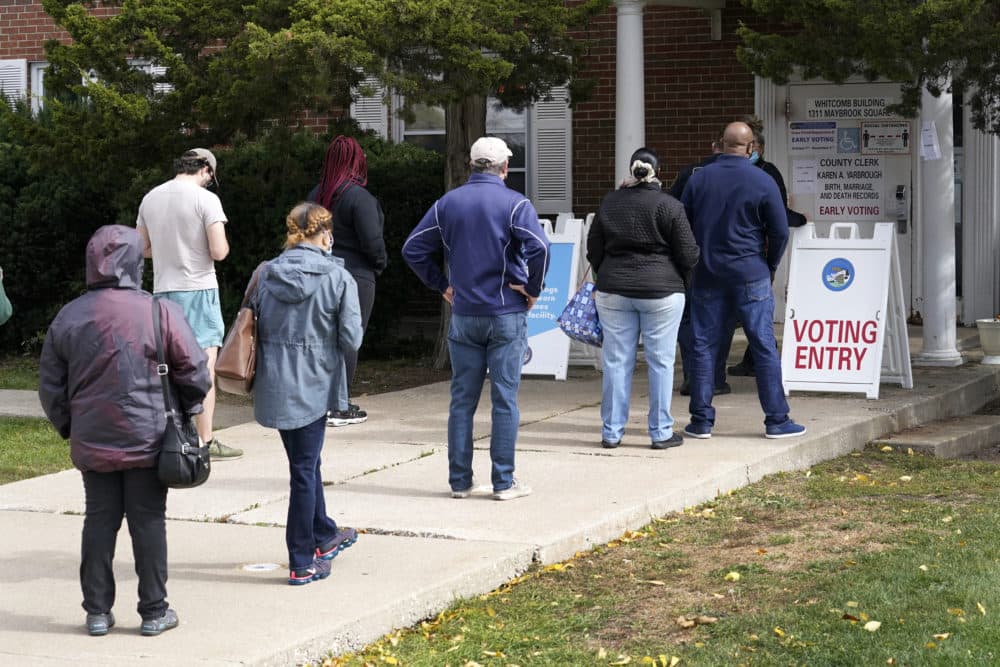Advertisement
Election 2020
Losing The Popular Vote, Winning The Electors And Other Electoral College Questions Answered

Election Day is only one point in the process of the Electoral College, which decides who wins a U.S. presidential race.
After the polls close, states begin to count and certify popular vote results according to their respective rules. Federal law then requires governors to prepare, “as soon as practicable,” official certificates to report the popular vote in the state. These documents, often signed by governors, must carry the seal of the state. One copy is sent to the archivist of the United States.
Is The U.S. Vote 51 Smaller Elections, Or 1 National?
A major misconception about the vote for U.S. president is that it is a national election. It’s not.
Instead, it consists of 51 elections — one in each state and in the District of Columbia. And that’s more than a technical difference.
The states conduct all elections and decide who is eligible to vote, beyond the bare requirements of being 18 years old and a citizen, set by the U.S. Constitution. For example, convicted felons can vote in some states, but not in others.
And the national vote tally is irrelevant to picking a president; what matters is the selection of representatives from each state to the Electoral College.
Each state chooses electors (their number set according to the number of men and women it sends to Congress) sworn to vote for the candidate who won the most votes. The electors meet in January to choose the president.
In most states, winner takes all, meaning that if Candidate A earns just one more vote than Candidate B, Candidate A wins all the state’s electors.
But Maine and Nebraska do it differently. There, two electors are chosen by statewide vote, and one is chosen from each congressional district. So for example, Maine split its vote in 2016: Hillary Clinton won the two at-large electors and one district, while the other district went for Donald Trump. This year, preliminary results show the same pattern: Joe Biden won two at-large electors and one district, and Trump won the other district.
While losing the national popular vote, a candidate can rack up electors by winning small states, or by winning by small margins in large states. This is what happened in 2016, when Clinton won the popular vote by nearly 2.8 million votes while Trump won the Electoral College, 304-227.
While that outcome might seem inadvertent, the system itself is not an accident. The framers of the Constitution embraced federalism — meaning while they wanted a functional federal government, they sought to balance that by preserving the powers of the states. One way they sought to ensure that was by putting elections in the hands of the states.
Is There A Deadline By Which The Electoral College Must Officially Have All Its Votes In?
Electoral College electors in each state don’t vote until Dec. 14. The electors’ votes typically align with the popular vote in each state. But not all states require the votes cast by electors to mirror the popular vote. Certificates recording the electoral vote results in each state must be received by the president of the Senate and the archivist no later than Dec. 23.
The official results of the electoral votes are sent to the new elected Congress, which is set to meet in a joint session on Jan. 6, 2021, and announce the results.
How Does A Candidate Lose The Popular Vote And Win The Election?
Five times in U.S. history, candidates have lost the popular vote but won the presidency — most recently in 2016. Could Donald Trump be the first to do it twice?
A look at an American political anomaly:
— 1824: Andrew Jackson won pluralities of both the popular vote and the Electoral College, but not a majority, sending the election to the House of Representatives. There were three other candidates, like Jackson members of the Democratic-Republican Party — John Quincy Adams, William Crawford and Henry Clay. Clay threw his support to Adams, sealing the victory for Adams, who made Clay his secretary of state. Irate at this “corrupt bargain,” Jackson quit the Senate and ran again for president in 1828. That time, he won easily.
— 1876: Democrat Samuel Tilden beat Republican Rutherford B. Hayes by more than 200,000 votes. But he needed 185 Electoral College votes and got only 184 to Hayes’s 165; 20 votes in Florida, Louisiana, Oregon and South Carolina were disputed. Congress set up a commission composed of representatives of both parties to decide the winner; on March 2, three days before the inauguration, they chose Hayes — a compromise the Democrats agreed to in exchange for a promise to pull federal troops from the South, ending Reconstruction.
— 1888: The campaign was riddled with corruption, including charges that votes were bought and Black votes suppressed. It ended with Democratic President Grover Cleveland winning the popular vote by more than 90,000 votes over Republican Benjamin Harrison, but losing the electoral vote 233 to 168. Cleveland would take back the office in the next presidential election.
— 2000: Republican George W. Bush lost the popular vote to Democrat Al Gore by more than 500,000 votes. But the Electoral College vote was tight, and it all came down to Florida, where a recount devolved into disputes over the markings on individual ballots. On Dec. 12, the U.S. Supreme Court stopped the recount with Bush ahead in Florida, giving the election to the former Texas governor. Bush won 271 electoral votes, Gore 266.
— 2016: Trump won the Electoral College, 304 electoral votes to Hillary Clinton’s 227 — but lost the popular count by 2.8 million votes. Though the electorate has of course grown over the years, Trump lost the popular vote by a greater margin than anyone ever elected president.
With reporting from The Associated Press' Deb Riechmann and Jerry Schwartz